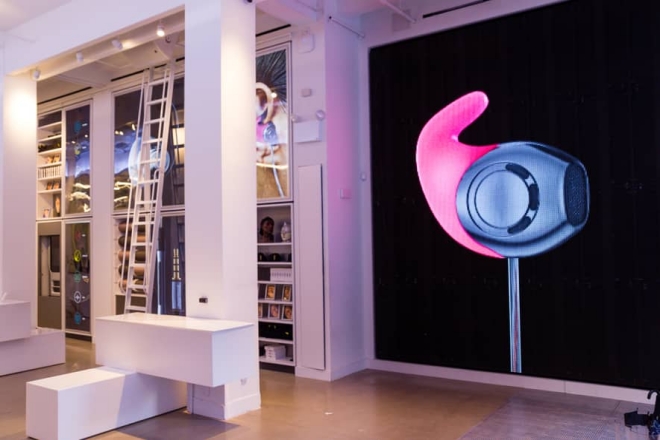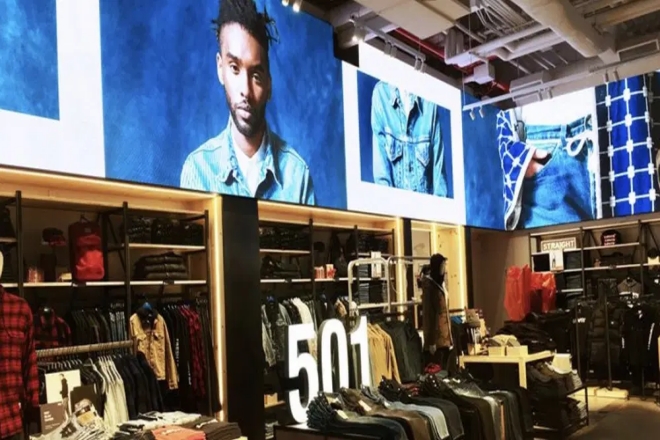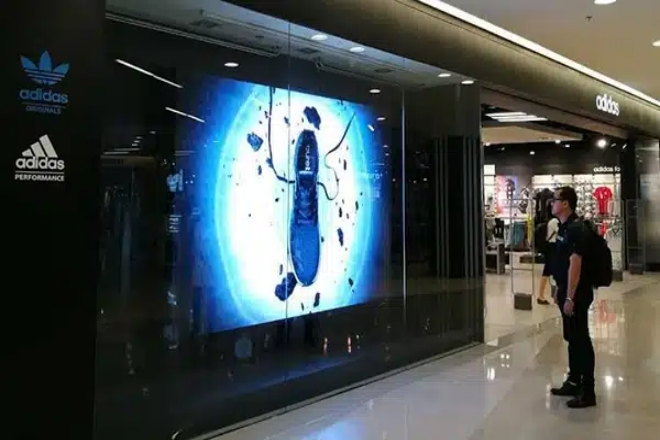Introduction

In the fiercely competitive business battlefield, how to quickly attract customers’ attention and enhance the brand interaction experience has become the focus of every merchant.
Écrans d'affichage LED, with their unique visual charm and powerful interactive functions, are becoming a sharp sword in the hands of merchants. But how to effectively use this weapon to achieve a deep connection between customers and brands?
This article will directly reveal the three-step strategy for you, allowing you to easily master the interactive secrets of LED display screens, create an unforgettable shopping experience, and thus stand out in the market and win the favor and loyalty of customers.
Follow our steps and open a new chapter of LED display screen customer interaction together!
Step 1: Strategic Planning and Content Customization
- Determine the specific goals you want to achieve
At this stage, clear and specific goal setting is the key to success. Suppose you are a fashion brand.
You can set the following goals to enhance market influence: “In the next quarter, through creative interactive activities on LED screens, increase brand exposure on social media by 60%, and promote at least 15% of online viewers to be converted into offline store customers, while increasing customer satisfaction scores to above 4.5 points.”
Such goals are both specific and measurable, which can guide the team to focus on effective strategies and facilitate subsequent evaluation of activity results.
- In-depth market research to accurately grasp customer needs
In order to accurately reach target customers, you need to conduct detailed market research.
For example, for young female consumer groups, you can launch a questionnaire on “What is your favorite fashion element?” through social media platforms and collect in-depth information in combination with customer interviews.
At the same time, data analysis tools should be used to monitor competitors’ marketing cases on LED screens to find out their shortcomings, such as insufficient interactivity or slow content updates.
Based on these findings, you can design a unique content strategy, such as combining the popular “sustainable fashion” theme, launching environmentally friendly material product displays and interactive Q&A, and attracting customers with differentiated advantages.
- Creative content planning to create an immersive interactive experience
In terms of content planning, taking a coffee shop as an example, you can design a series of beautiful and interactive content to attract customers.
First, a high-definition screen will be used to play a video of the production process of daily special drinks, with warm background music and beautiful pictures to create a comfortable visual enjoyment.
Then, incorporate interactive elements into the content, such as setting up a “photo check-in area,” where customers can scan the QR code on the screen to participate in the “most beautiful coffee photo” competition, upload their own photos to the designated platform, and have a chance to win a free drink coupon.
In addition, the introduction of AR technology allows customers to scan specific patterns on the screen with their mobile phones to “try” unlisted new products in a virtual space and experience unprecedented immersive shopping fun.
To ensure the freshness of the content, you can launch activities with different themes according to seasonal changes.
In spring, you can promote “Spring Limited Edition Drinks” and showcase the production process and unique flavor of new products; in winter, you can switch to the “Warm Winter Special Drinks” series, with warm scenes to attract customers to experience.
At the same time, establish a customer feedback mechanism, regularly collect and analyze customer opinions, and adjust content strategies in a timely manner to ensure that every display can accurately hit the hearts of customers.
Step 2: Technical integration and platform construction of LED display screens

1). Accurate hardware selection and installation to create a visual focus
At this stage, you first need to carefully select the most suitable LED display screen type, size, and installation method based on the actual space size of the store, budget constraints, and specific display needs.
Whether it is wall-mounted, ceiling-mounted, or embedded, you will ensure that the display can perfectly integrate into the store environment and be conspicuous so that customers can be attracted by it as soon as they enter the store and naturally stop to watch and participate in the interaction.
2). Deploy an efficient content management system (CMS) to simplify the operation process
In order to achieve flexible updates and efficient management of content, you will introduce an advanced CMS system.
This system not only supports remote content upload and update but also realizes advanced functions such as timed playback and multi-screen linkage, making content display more intelligent and personalized.
At the same time, you pay attention to the ease of use of the system to ensure that even non-technical personnel can easily get started and quickly master the various operations of content management to reduce store operating costs.
3). Deep integration of interactive technology to enhance customer experience
In order to create a richer and more interesting interactive experience, you will actively integrate hardware devices such as touch screens and sensors.
These devices will work closely with LED displays to realize a variety of interactive methods, such as gesture recognition and touch feedback, allowing customers to feel unprecedented technological charm during the interactive process.
In addition, you will also introduce data analysis tools to collect customer interaction data in real-time, such as key indicators such as click-through rate, dwell time, and engagement, to provide strong support for subsequent strategy optimization.
More importantly, you will also consider seamless integration with social media platforms. Through this function, customers can easily share their interactive experience on social platforms such as Moments and Weibo, further expanding brand exposure and attracting more potential customers.
This viral spread effect based on social media will bring unexpected customer traffic and sales growth to the store.
Step 3: Operational optimization and continuous improvement of LED display screens
1). See the effect and listen to what customers say
You should regularly check how many people participate in the interactive activities on the LED display screen and how many of these people actually buy things. This is as important as looking at the transcript after the exam.
At the same time, you will also directly ask customers what content they like and what they don’t like so that you can know how to improve.
2). Keep changing and keep fresh
Based on customer feedback and our own observations, you will constantly update the content on the LED display screen. Just like you change clothes, you always hope to have new tricks every day.
You will try new ways of interaction so that customers can discover new things every time they come, so that they are more willing to stay.
3). Train employees to make them understand you better
You also need to teach store employees how to operate LED displays and how to promote interactive activities. In this way, they can better help customers and let customers feel our professionalism and enthusiasm.
At the same time, you should also encourage employees to come up with better ideas so that they can participate in the improvement of the project.
4). Long-term interaction to make customers fall in love with you
You need to remember the preferences of each customer so that the next time they come, you can recommend them things they may like.
You also need to hold special events regularly, such as holiday celebrations, new product launches, etc., so that customers feel that you are always preparing surprises for them. In this way, customers will like you more and more and become your loyal fans.
4. Précautions

When using LED displays, in order to ensure their normal operation and extend their service life while improving user experience, you need to pay attention to the following aspects:
1). Hardware selection and installation
Choose the right display: Choose the right type, size and installation method of LED displays according to store space, budget and needs. Ensure that the résolution, luminosité, contrast and other parameters of the display meet the usage requirements.
Professional installation: Professionals should install the display screen to ensure that it is firmly installed and avoid shaking or falling off during subsequent use. At the same time, ventilation and heat dissipation of the display screen should be considered to avoid long-term high-temperature operation.
2). Content management and update
Content management system (CMS): Introduce advanced CMS system to realize remote content update, timed playback, multi-screen linkage and other functions. Ensure that the system is easy to operate and easy for non-technical personnel to get started.
Content creativity and update: Regularly update the content on the display screen to keep it fresh. The content should be attractive and creative to attract the audience’s attention and encourage them to interact. At the same time, ensure that the information is concise and easy to understand.
3). Daily maintenance and care
Cleaning and maintenance: Clean the surface of the display screen regularly to remove dust and stains to maintain good visual effects. When cleaning, use a soft brush to gently brush off the dust, and avoid using liquid detergents to prevent damage to the LED lamp beads. You can use alcohol and a soft cloth to wipe, but do not use water or a wet cloth directly.
Environmental control: Maintain a suitable temperature and humidity for the working environment of the display screen. The ideal operating temperature is -20℃ to 50℃, and the humidity should be kept within the relative humidity range of 10% to 90%. Avoid exposing the display to extreme temperatures, high humidity or corrosive environments.
Waterproof and dustproof: For outdoor displays, ensure that they have good waterproof and dustproof properties. Regularly check whether the waterproof and dustproof measures are intact, and repair them in time if they are damaged.
Regular inspection: Regularly check whether the power supply, signal line, and other connections of the display are firm, loose, or damaged. At the same time, check whether the brightness and color of the display are normal and handle them in time if there are any abnormalities.
Conclusion
In summary, as an innovative tool in the modern retail field, the potential of LED display screens is far greater than that of simple information displays.
Through carefully planned interactive content, efficient and integrated technology platforms, and continuously optimized operation strategies, merchants can make full use of LED display screens to achieve in-depth interaction with customers, thereby enhancing brand awareness, improving customer satisfaction, and promoting sales growth.
Enfin, si vous souhaitez en savoir plus sur les écrans d'affichage LED, veuillez nous contacter.
